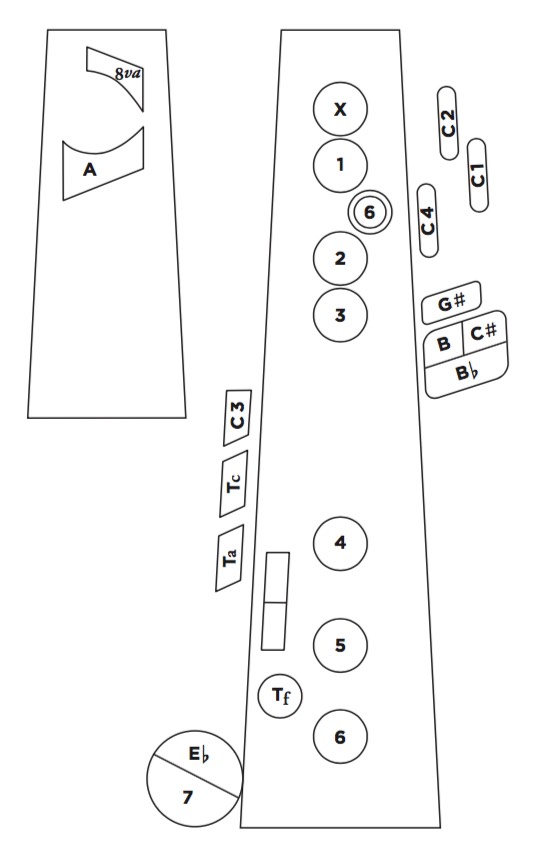DIRECT ACCESS TO THE MULTIPHONICS TABLE
This computerized repertoire of multiphonics for saxophones has been created to serve composers as well as saxophonists.
This directory is a flexible working tool allowing users to search sounds according to different criteria. Ex. Heights, characteristics.
The contents of this directory will be increased and updated over time
How to use
This directory of multiphonics has four search fields:
INSTRUMENT, HARMONIC, FINGER AND CHARACTERISTIC
There is also an AUDIO field and a NOTE field

1) INSTRUMENT
Select the instrument for which you want to perform a search. Choose "All" if you want your search applied to all instruments..
2) HARMONICS
We have limited the number of harmonics to the three predominant harmonics. The smallest interval is ¼ of a tone.
The search is carried out with the English notation system: A-B-C-D-E-F-G.
The sign for the sharp is the #, and the sign for the flat is the lowercase b.
The quarter flat is written: 1/4b and the quarter sharp 1/4#.
Note:
If you enter the letter C in the HARMONICS search field, you will get all the sounds containing the note C including C 1/4# and C 1/4b, all octaves combined.
If you enter C1/4# you restrict the results that pitch only. Same thing for 1/4b. You can further narrow the search by adding the desired octave between braces. : C1/4# [5]
To limit the search to a specific note whether it is natural, sharp or flat just add the sign [(brace) after the note. Ex: C [ will limit the search to C as well as D#[ limit the search to D sharp.
3) CHARACTERISTIC
The content of this research field has a subjective aspect.
Caution: The CHARACTERISTIC field is not filled for all multiphonics.
The different characteristics are:
BEATING: two very close pitches (les than half tone) that create a strong beating sound.
SLOW EMISSION: Few opportunities for net attacks. His asking a preparation and working little in a very rhythmic context.
FAST EMISSION: Possibility of sharp attacks and / or attacks with accents.
FORTE: Only works in a register of strong dynamics
PIANO: Only works in a register of soft nuances
DYNAMICS: Possibility of nuances, crescendo and decrescendo
4) FINGERING
Fingering chart by Jean-Marie LONDEIX:
8vaXBis_123_4567_EbC#BBb-A_tatctf_c1c2c3c4c5
The keys and pads used to search for a multiphonic should always appear in the above-mentioned order and include the underscore bars where appropriate.
